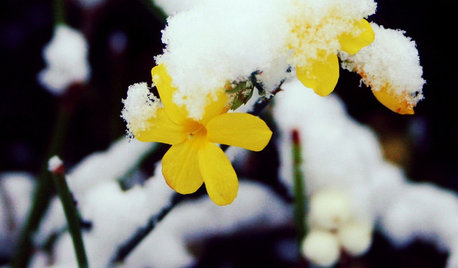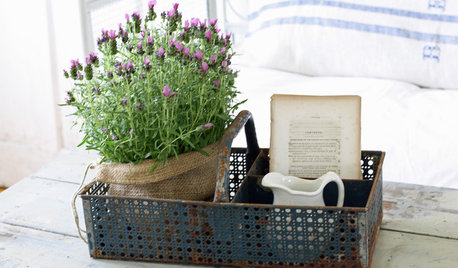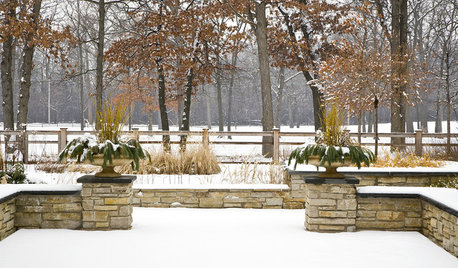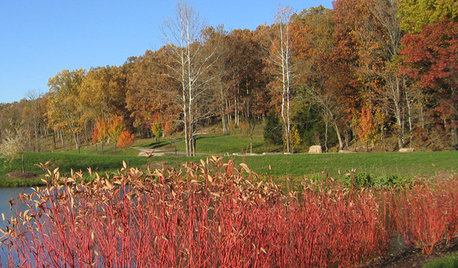Winter Rose Propagation
pizzuti
12 years ago
Featured Answer
Sort by:Oldest
Comments (22)
mad_gallica (z5 Eastern NY)
12 years agopizzuti
12 years agoRelated Discussions
Anybody propagating now to winter over?
Comments (6)I'm doing lots of coleus too. I have 6-7 varieties myself. You can skip the water roots though. They root fine in soil. Use a drain less container or a pot and bowl and bring the water level with the soil(or as high as you can) at first and let it almost dry out before watering again. By this time it will have roots. I also just took cuttings of my blue vitex and plan to take cuttings of impatiens, mexican flame vine and purple passion vine. This is my first year for cuttings. I never tried before my tomato plants this spring. Tomato and coleus are both very easy. I hope the others will root for me. It can't hurt to try....See MoreBullet-Proof Rose Propagation - NOID Rose Picture Obtained
Comments (6)Hoovb, I think you're exactly right! I went to Bing and found a photo of an infected rose that looks exactly like the one I took cuttings from. It had more of the pink on it the second day than the first, and that's probably an indication that it was spreading on the blooms. This isn't a systemic infection, is it? Would I be propagating infected plants if I root the pieces I cut?...See MoreRose Rustling and Rose Propagation
Comments (6)Actually, we did give the same talk a couple of months ago, for California Coastal Rose Society down in Carlsbad. We're always happy to do that, when we don't have a previous commitment. We're going to speak at ARE for the Fall Seminar, but I'm not sure whether that will be THAT talk, or a different one. Jeri Jennings...See MoreIndoor Sowing, Winter Sowing & Propagation 2009
Comments (135)Hi! My name is Karen and I've posted some questions on the geranium forum and got some good advice, but noone is terribly chatty over there so I was wondering if this is a good forum for me to join. Are you taking new members?? I'm in IL and we started over 700 (agh!)pelargoniums, or whatever they are called. We call them geraniums. Anyway, I was told to pinch and went to town and I hope I did it right because I have some sad plants. And it's about time to start hardening off...and I haven't a clue what I'm doing! We have two portable greenhouses outside with heaters in them and we put the impatiens and pansies, I think, in there. But the geraniums are inside under grow lights and in sunny windows (as sunny as it gets during the long awaited IL 'Spring' if that's what you call it!) Can anyone help me keep them alive?...See Moremad_gallica (z5 Eastern NY)
12 years agoroseseek
12 years agopizzuti
12 years agoGardenLover353
12 years agopizzuti
12 years agoroseseek
12 years agoroseseek
12 years agoGardenLover353
12 years agopizzuti
12 years agoroseseek
12 years agoFleur
12 years agocmdg
12 years agopizzuti
12 years agoGarden_Gab
12 years agodonna.frost.ky.girl
9 years agoseil zone 6b MI
9 years agoluxrosa
9 years agoseil zone 6b MI
9 years agodan_keil_cr Keil
9 years ago
Related Stories

WINTER GARDENINGPruning Secrets for Exquisite Roses
Encourage gorgeous blooms year after year with this time-tested advice on how to prune your rosebush in winter for health and shape
Full Story
HOUSEPLANTSHow to Force Amaryllis Bulbs Indoors
Enjoy vibrant red blossoms even as gardens turn snowy white, by teaching this hardy repeat performer to ignore the calendar
Full Story
YELLOW FLOWERSGreat Design Plant: Winter Jasmine Gladdens Snowy Gardens
Sunny yellow flowers defy the frost, bringing cheer to the garden on gray days
Full Story
HOUSEPLANTSOutsmart Winter — Make Houseplants of Your Garden Growers
No need to watch Jack Frost play Wreck the Rosemary. Bring your garden inside for the winter, using containers and these guidelines
Full Story
GARDENING GUIDES6 Wonderfully Easy Roses for Any Gardener
Look like an expert even if you're just starting out, with these low-maintenance gems of the rose world
Full Story
DECORATING GUIDESTop Design Trends From the Winter 2015 Las Vegas Market
Interior designer Shannon Ggem is tracking finishes, motifs and design combinations at the 2015 show
Full Story
GARDENING FOR BIRDSFeed the Birds: 6 Plants for Abundant Winter Berries
Be kind to your fair feathered friends during lean food times by planting a shrub or tree loaded with nutritious snacks
Full Story
WINTER GARDENING10 Ingredients of a Beautiful Winter Garden
Winter gardens have a beauty all their own. Enjoy its bare branches, sculptural evergreens, and more
Full Story
GARDENING GUIDESThese Hedges Can Add Interest to Your Winter Garden
Evergreen trees and shrubs provide structure and color in the winter months — and can attract wildlife too
Full Story
FEEL-GOOD HOMEYour Best Winter Accessory for the Kitchen
Flowers and foliage will bring cheer to your kitchen even in the dead of winter
Full StorySponsored
Central Ohio's Trusted Home Remodeler Specializing in Kitchens & Baths
More Discussions





Mary423